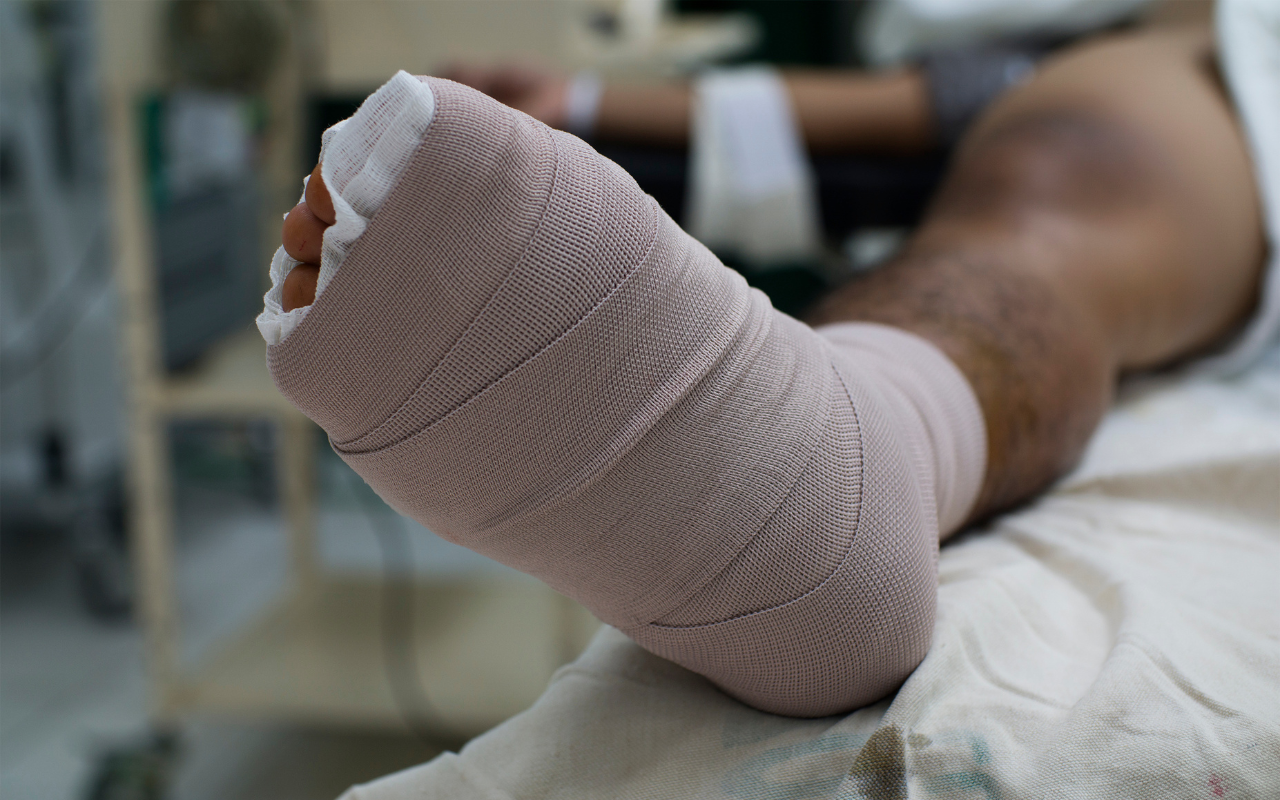New research published in the Medical Journal of Australia has a found a significant number of people with diabetes-related foot ulcers (DFUs) are requiring hospitalisation before they heal.
DFUs are the leading cause of diabetes-related hospitalisations worldwide, and the leading cause of amputations.
In Australia, DFUs account for approximately 28 000 hospitalisations annually, with 5000 of those requiring amputation procedures.
While there have been studies on the incidence and risk factors for diabetes-related amputations, epidemiologist Yuqi Zhang and co-authors wanted to examine the features of DFU-related hospitalisations as a whole.
“We therefore assessed the incidence, risk factors, and length of stay for DFU-related hospitalisations, with and without amputation, in a large cohort of people with DFU in Queensland,” Yuqi Zhang and co-authors wrote.
“Our findings could assist services determine which people with DFU would benefit most from intensive interventions, potentially averting large numbers of diabetes-related hospitalisations.”
The findings
The researchers analysed data of 4709 people with DFU who visited outpatient Diabetic Foot Service clinics in Queensland between July 2011 and December 2017.
Of these people, 977 (20.7%) would go on to require DFU-related hospitalisation, 669 people (68.5%) did not undergo any amputation, 258 people (26.4%) required minor amputation, and 50 people (5.1%) required major amputation.
Different outcomes for different age groups
The data showed DFU-related hospitalisation rates had increased most rapidly in younger age groups, with people under the age of 60 years at greater risk of hospitalisation without amputation.
“Younger people with DFU may have younger onset type 2 diabetes, a more aggressive phenotype, particularly with regard to neuropathy, and they are more active than older people, increasing plantar tissue stress that can lead to poorer DFU outcomes,” the authors wrote.
“Greater access to intensive cardiovascular disease management and specialist outpatient Diabetic Foot Services could be useful strategies for averting DFU-related hospitalisations, especially among younger people.”
The researchers noted the risk of major amputation was highest for people between 60 and 80 years of age.
“This may be because surgeons and patients prefer attempting limb-sparing treatments, such as revascularisation procedures, to prevent or delay major amputations and their effects on function in younger people and the risk of death in older patients,” the authors wrote.
“Decision making regarding amputations for people hospitalised for DFU should be further investigated.”
Long hospital stays and multiple risk factors
The length of a hospital stay for DFUs ranged from six days when no amputation was involved, to 19 days for admissions requiring major amputation.
“As the mean hospital length of stay for diabetes-related hospitalisations is five to seven days in England and the United States, and four to six days for all-cause hospitalisations in Australia, these DFU-related hospital stays were all relatively long, regardless of amputation type,” the authors wrote.
The authors found deep ulcers and severe peripheral artery disease were common risk factors in all hospitalisation outcomes, but other risks differed by outcome.
“Risk factor profiles differed between hospitalisations with or without amputation procedures, including for factors such as age, cardiovascular disease, end-stage renal disease, infection, peripheral artery disease, ulcer size, and DFU treatments,” the authors wrote.
“The risk factors for minor amputations were mostly modifiable (such as smoking and not receiving DFU treatments); for major amputations they were mostly non-modifiable (such as larger ulcer sizes), but could perhaps be modified if people were referred to outpatient Diabetic Foot Services that adhere to guideline-recommended treatments earlier.”
Read the research in the Medical Journal of Australia.
Subscribe to the free InSight+ weekly newsletter here. It is available to all readers, not just registered medical practitioners.

 more_vert
more_vert
The major problem with diabetic foot ulcers is the lack of effective off loading – if you continue to walk on an ulcer it cannot heal. The “off loading” shoes provided in hospitals are generally completely useless and there is no attempt to measure pressures in the foot and the effect of off loading – which should be a given.
The second issue is that arterial supply is often overlooked or assumed to be adequate because the foot is pink or there are Doppler pulses audible. Diabetics get very distal tibial artery disease and a diagnostic angiogram is required to identify the occlusions. CTangiography is often unhelpful and wrong.
The admission to hospital is usually for iv antibiotics as there is a perception that infection is the main reason these wounds do not heal which is incorrect but the ulcers often improve in hospital as bed rest provides excellent off loading – though too often there is not enough emphasis on keeping the patient in bed and not allowing them to wander around with their iv pole to get coffee and cake or have a smoke!
Off loading is by far our greatest issue however and in a world where we have robots and the technology to get to outer space it seems incredible that we are unable to solve this problem.